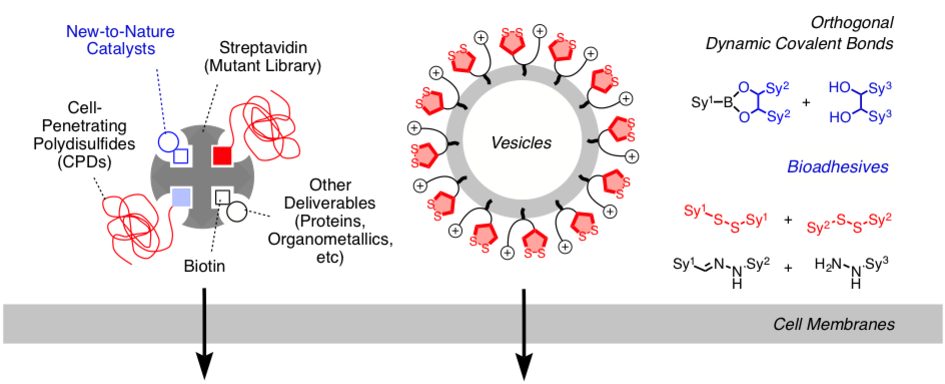
The objective of this project is to move beyond primary systems to maximize complexity and cumulate emergent properties that are a) significant (conceptual or practical), b) absent in the individual components, and c) inaccessible otherwise.
Ongoing projects focus on the development of orthogonal dynamic covalent bonds for advanced systems interfacing; current emphasis is on boronic esters from bioadhesives. A second specific objective is the creation of artificial enzymes that operate with interactions that are new-to-nature; current emphasis is on the interfacing of anion-π interactions and streptavidin mutant libraries. A third specific objective focuses on disulfide exchange chemistry on cell surfaces to interface living cells with functional systems such as protein complexes involved in gene editing, artificial metalloenzymes for metabolic engineering, and liposomes or polymersomes as artificial organelles. In this project, emphasis is exclusively on added value from collaborations within the network of this NCCR, i.e., research that could not be realized without this NCCR.
Matile group @UniGe